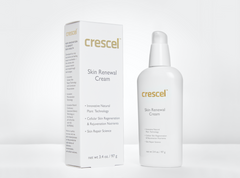Bill’s Crescel Experience: The Profound Value of Prevention
Post-surgical healing with diabetes — College Station, Texas
Download/View PDFBill is a gregarious 73-year-old in College Station, Texas, working in Client Sales for Home Depot, who has lived with diabetes for almost half of his life. After a great many years, he finally succeeded in adopting significant lifestyle changes that have resulted in a much healthier diet and dramatic weight loss, substantially improving his glucose control. This past summer he decided to undergo surgery to correct the severe bunion and hammer toe on his left foot, because the pain and inability to wear a shoe left him unable to walk. The surgery would straighten the misaligned bones and hold them in place with a series of screws. Bill looked forward to a quick recovery and the freedom that this toe repair would give him. But he had no idea of the reality that lay ahead.
Bill was unaware of the serious inroads that diabetes—a chronic inflammatory disease—had gradually made on the ability of his skin to heal. To start with, diabetes substantially increases the degree and the duration of inflammation that normally occurs right after surgery, turning a normal reaction into a harmful one. And more. It disrupts—and sometimes prevents—a smooth transition to the anti-inflammatory healing phase. It also interferes with the ability to grow new blood vessels needed to nourish and oxygenate the healing area. And because diabetes makes the skin thinner and stiffer over time, not only is it damaged far more easily, but its cellular ability to repair damage is impaired. These unavoidable consequences of diabetes are significant wound-healing obstacles, and the data draw a distressing picture of the post-surgical consequences. Diabetic patients are extremely vulnerable to excessive inflammation, to infection, to pathological scarring, and to their wound eventually reopening. And if the anti-inflammatory transition fails, then that patient’s wound becomes chronic.
Bill’s hammer toe was surgically corrected on August 15, and his distress about the state of his surgical incision began almost immediately. His surgeon, aware of the prolonged inflammation and slow healing progress that characterize diabetic patients, did not express concern to Bill at his 1-week postop visit, and then left for his summer vacation. Bill suspected that he was developing an infection, and visited his podiatrist as he reached the end of his second postop week. His podiatrist agreed, and started Bill on an antibiotic. This treated the active infection, but did nothing to advance healing.
And then Crescel Skin Renewal Cream entered Bill’s life. A close cousin of Bill’s knew of this unique topical therapeutic and its documented ability to enable dysfunctional skin cells to regain the molecular tools to heal themselves. He gifted Bill a bottle when he saw the worsening state of the incision on his toe. Bill began applying Crescel that same day, several weeks after his surgery. “I really liked the fact that it is derived from plants,” Bill recalls, “and I was very impressed that there was no burning sensation when I applied it. So easy to use. And I began to notice improvement almost immediately.” As the first week of Crescel treatment concluded, inflammation was subsiding, incisions were closing, and Bill’s foot no longer looked threatened. Progress was clear. And it has continued.
Bill is not the only one who is thrilled with this remarkable outcome. After the endocrinologist who treats Bill’s diabetes saw the current postop state of his toe, this diabetes specialist expressed his amazement at the progression of healing. He planned to learn about Crescel’s unique mechanism of action and explore incorporating it into his practice. Restoring the ability of wounded skin cells to heal eliminates the wound-healing challenges and consequent health risks that are otherwise inevitable for diabetic patients.
This is Bill’s exceptional story of Crescel’s profound preventive benefits, but the repercussions go well beyond this one patient. In 2018, the CDC determined that there are 34.2 million Americans with diabetes in the U.S., and in 2024 they found that the number of new diagnoses grows significantly every year. At this rate, by 2060 the number of diabetic patients is expected to increase by 700%. The CDC points out that diabetic wounds affect 25% of patients. And they emphasize that treating these wounds is so costly that it is responsible for at least one-third of the total cost of treating diabetes and its complications. And beyond this financial burden, there are the patients’ substantial physical and emotional burdens. The ability to prevent these wound-initiated challenges and dangers would rewrite this scenario.
Crescel’s preventive potential can do this.





